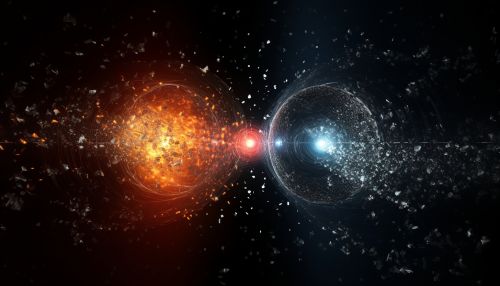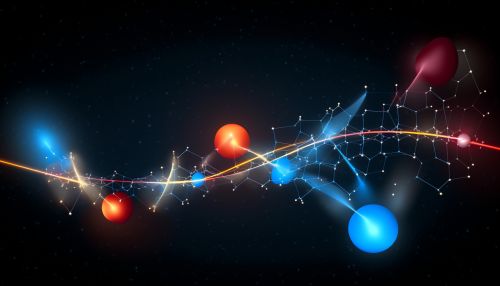Physics of Quantum Field Theory and Its Implications
Introduction
Quantum Field Theory (QFT) is the theoretical framework for constructing quantum mechanical models of subatomic particles in particle physics and quasiparticles in condensed matter physics. QFT combines the principles of classical field theory, quantum mechanics, and special relativity. A major outcome of QFT is the prediction of particle-antiparticle pairs and their dynamics.


Principles of Quantum Field Theory
Quantum Field Theory is built on certain fundamental principles. These principles are the basis for the mathematical formulation of QFT and its physical interpretations.
Quantum Mechanics and Field Theory
QFT is a synthesis of the principles of quantum mechanics and classical field theory. Quantum mechanics introduces the concept of wave-particle duality, which postulates that all particles also have wave-like properties. Classical field theory, on the other hand, describes how fields such as the electromagnetic field interact with matter. QFT combines these two theories to create a quantum description of fields.
Special Relativity
The principles of special relativity are integral to QFT. Special relativity, formulated by Albert Einstein, postulates that the laws of physics are the same in all inertial frames and that the speed of light in a vacuum is a universal constant. QFT incorporates these principles to describe the behavior of particles moving close to the speed of light.


Quantum Fields and Particles
In QFT, particles are viewed as excited states of the underlying quantum field. This is a shift from the traditional view in quantum mechanics where particles are considered fundamental. In QFT, the fields are fundamental and particles are manifestations of field excitations.
Antiparticles
One of the major outcomes of QFT is the prediction of the existence of antiparticles. For every type of particle, there exists an antiparticle that has the same mass but opposite charge. The existence of antiparticles was confirmed experimentally with the discovery of the positron, the antiparticle of the electron.


Mathematical Formulation of Quantum Field Theory
The mathematical formulation of QFT is complex and involves several advanced concepts in mathematics and physics. Here, we will provide a high-level overview of the key components of this formulation.
Field Operators
In QFT, fields are represented by field operators. These operators act on the quantum state of the field, changing it from one state to another. The properties of these operators are determined by the principles of quantum mechanics and special relativity.
Feynman Diagrams
Feynman diagrams are a graphical representation of the interactions between particles in QFT. Each line in the diagram represents a particle and each vertex represents an interaction between particles. The diagrams are named after Richard Feynman, who introduced them as a way to simplify the calculations involved in QFT.


Path Integral Formulation
The path integral formulation is a method in QFT for calculating the probability of a system transitioning from one state to another. It involves summing over all possible paths that the system could take, with each path weighted by a phase factor.
Implications of Quantum Field Theory
Quantum Field Theory has far-reaching implications in both theoretical and experimental physics. It has provided the foundation for the Standard Model of particle physics and has led to the prediction and discovery of new particles.
Standard Model
The Standard Model of particle physics is a theory that describes three of the four fundamental forces in the universe: electromagnetism, weak nuclear force, and strong nuclear force. QFT provides the mathematical framework for the Standard Model, allowing for the calculation of particle interactions and decays.
Prediction and Discovery of New Particles
QFT has led to the prediction of several new particles, including the Higgs boson. The Higgs boson, predicted by the Higgs mechanism in QFT, was confirmed experimentally at the Large Hadron Collider in 2012.


Quantum Electrodynamics and Quantum Chromodynamics
Quantum Electrodynamics (QED) and Quantum Chromodynamics (QCD) are two important theories in QFT. QED describes the interaction of charged particles with the electromagnetic field, while QCD describes the interaction of quarks and gluons, the constituents of protons and neutrons.
